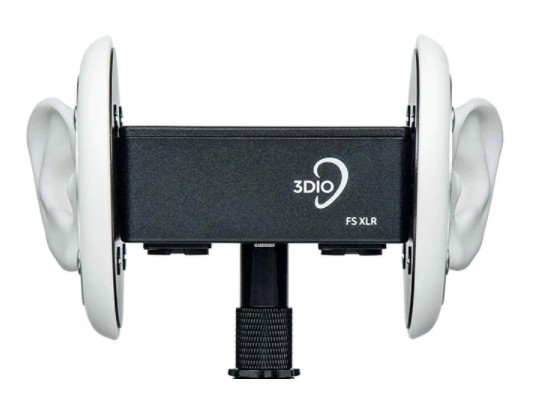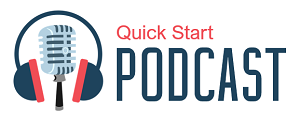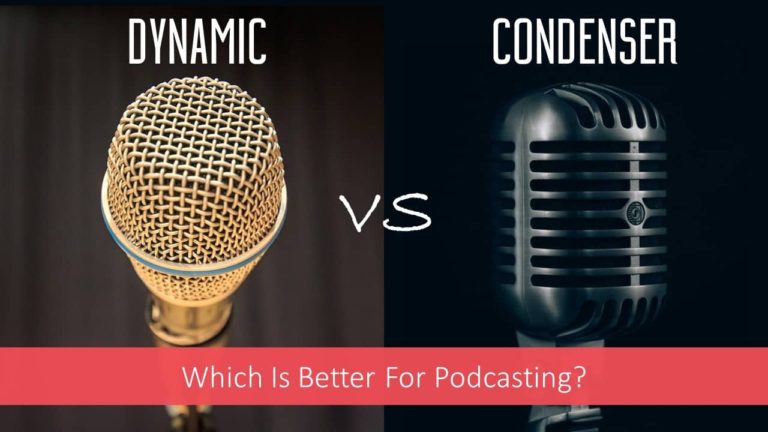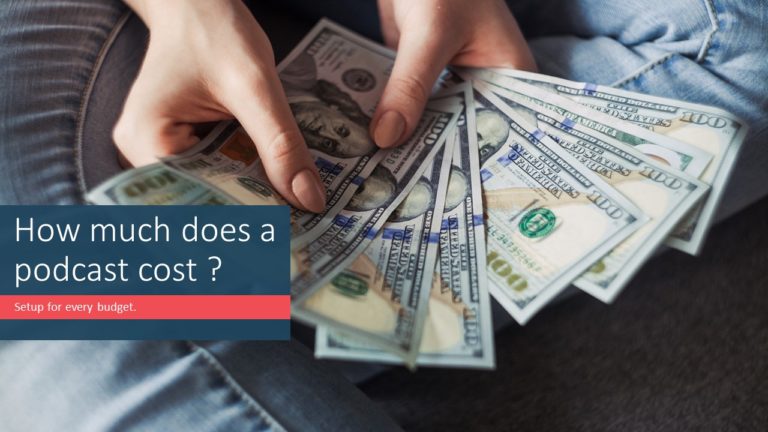Best ASMR Microphone
ASMR is one of the most popular entertainment phenomena of the past several years, if not a little strange. This tingling feeling, which originates at the scalp and travels down the spine, is called a “autonomous sensory meridian response” (ASMR).
ASMR involves making noises into a microphone in order to evoke a positive reaction from the listener. This may be done by whispering, crinkling paper, tapping their nails, and more. Best ASMR microphone is the one very good at capturing the little details that can trigger autonomous sensory meridian response from listener.
What exactly is ASMR?
An Autonomous Sensory Meridian Response, or ASMR, refers to the sense of relaxation, frequently described as tingling, static-like, that runs down the back of the neck and upper spine from the scalp. As an example, there has been a subculture around YouTube videos and their rise in popularity in recent years.
People describe this “head tingle” as a result of visuals and delicate noises like whispers and crackles that they find appealing. Getting a haircut or listening to someone explain something to you slowly and carefully may have made you feel tired or calm in the past. Another fantastic example is the sound of nature.
When you look at how many people were looking for ASMR on YouTube every day over the previous few years, you can see how popular ASMR has become over the last few years.
What do ASMR artists do?
ASMR channels come in a variety of genres, and each ASMR artist employs a unique set of tactics and triggers.
To begin, here are some of the most common ASMR triggers:
Whisper or quiet talk: The pace, loudness, tone, and emotion of your voice all have an effect on ASMR. Numerous musicians speak slowly, conveying a peaceful demeanour that may be calming to the listener.
Fingernails sliding, scraping, or tapping: even the most innocuous noises may induce a state of relaxation. For instance, tapping a glass with your fingernails, leafing through a magazine, crumpling paper and different materials, or toying with latex gloves, an old cassette tape, and other common household things.
Eating sounds is one of the most popular ASMR disciplines. While eating a lobster, cake, or whatever else is available in your refrigerator, noises made with the lips (smacking) or the tongue (snaps) might cause ASMR.
A spa treatment or a visit to the barbershop might trigger tingling in the head. It convinces many listeners that they are sitting in a hairdresser’s chair or reclining on a massage table. Men’s favourite: a great beard shave with shaving cream!
Skincare and make-up: Swiping the microphone’s brushes, swabbing cotton balls, and applying nail paint are all typical “trigger” noises.
When deciding what kind of films to create, bear in mind that your imagination is limitless.
The 3 main factors to capture a good ASMR sound
To get a good ASMR recording, or any recording, you need to consider three main factors:
- The source of the sound
- The place or room in which it is recorded
- The equipment that is used to record
Lets go through these one by one ..
The source of the sound
Keep in mind that the quality of an ASMR recording is only as excellent as the quality of the ASMR performance. In addition to giving a stellar performance, it will help you develop some microphone etiquette.
For ASMR, we should really speak about discipline since it includes a lot of little aspects that may appear insignificant, but they may have a big effect. Among the things to keep in mind are:
Breath sounds might become overbearing while capturing micro-triggers like whispering. Try to keep your breath away from the microphone in order to prevent this.
Sibilance: “S” sounds may become harsh and grating for certain people, however this varies from person to person because of the alignment of your teeth.
For this reason alone, you should experiment with different microphones.
Sibilance may be minimized by speaking slightly off-axis into the microphone rather than straight into it, since this reduces the amount of high-frequency information that the microphone picks up.
The so-called plosives are another another issue you’ll have to deal with.
The letters P, T, and B are the most prominent.
Use a pop filter since such letters may produce bursts of air that can spoil your recording.
Due to our extensive study, we developed a pop filter that uses magnets to adhere to our shock mount and does not detract from the aesthetics of your ASMR video.
Plosives may also be removed with the help of the windscreen.
Some of you may be familiar with the term “closeness effect,” which refers to the influence of physical proximity on behaviour.
The scope of this article does not allow for an in-depth explanation of this phenomena. Let’s keep things simple to prevent confusion:
The term proximity effect refers to an increase in bass response when you get close to a microphone with a directional pattern. As you come closer to the membrane, you’ll hear an increase in the bass in your voice, starting at around 25-30 cm. When recording, keep this in mind.
Clothing: It may come as a surprise, but the way you dress may have an effect on the sound you hear.
When you’re attempting to capture extremely faint sounds, it may be really frustrating when you’re working with things that are very loud.
Experiment a little with your microphone before you film your first ASMR video. You’ll always get better recordings if you know what you’re doing.
To begin, we’ll go over some of our favorite ASMR microphones, then we’ll talk about recording methods and the features we look for most in an ASMR microphone. If you’re looking for a more expensive option, we recommend the Shure SM7B or Neumann TLM 102, both of which cost over $400.
The place or room in which it is recorded
Since most ASMR recordings are done in the comfort of someone’s home rather than a professional recording studio, you may encounter difficulties here. But the good news is that you can make simple adjustments to your space to achieve the finest possible ASMR sound.
Street noise, for example, cannot be turned off while making an ASMR video since it is a background noise that cannot be turned off like the washing machine or computer fan. Street noise, on the other hand, is influenced by the time of day you choose to capture. In order to prevent annoying street or airline sounds, many YouTubers film their videos at night.
Reflective materials in the recording environment, such as bare walls, may be a source of audio artefacts. You may have seen this in a restroom or when moving into a new apartment that was still unfurnished. In this context, “comb filtering” and “flutter echo” are technical terms for what we’re referring to. To go into great depth on the acoustics of a space would take much too much time. Don’t forget that absorbers are on your side! A thick curtain, a carpet on the floor or wall, and even the simple act of opening your closet may make a difference. At the absolute least, the high frequencies will benefit from even the tiniest improvement.
Mic location is critical while recording in your home studio. Standing waves or room resonances may be a nuisance. For some reason, blowing into an empty bottle produces a distinct sound. Empty rooms, like empty bottles, have their own unique set of resonances. It’s a question of trial and error to find the perfect place in your space.
Make sure you know where you’re going. Find the optimal location for your recording equipment by moving it about a little. To make it easier to detect and maintain uniformity, tape the location on the floor where the equipment can’t be lifted (like in front of the TV).
The equipment used for recording
Having the right equipment is just as crucial as having the right expertise. When it comes to ASMR recording, a seasoned ASMR artist might get greater results with less costly equipment than an inexperienced one.
What do you need in order to get started?
To get started with ASMR, you will need a good video camera to record the video , a editing equipment and software. The most important thing that you will need is a good sensitive microphone and some sound dampening pads.
Best ASMR microphones for all budgets
Lets see the best ASMR mics you can buy at various budgets.
There are 2 main type of microphone technologies, dynamic and condenser. There are also 2 ways to connect to recording equipment such as your PC , Audio interface or mixer. These two ways are USB and XLR.
Audio Technica ATR 2100 : Best ASMR microphone under 100 USD
This is by far the most recommended microphone for anyone starting out. You will never go wrong with this best podcast microphone under 100 USD.
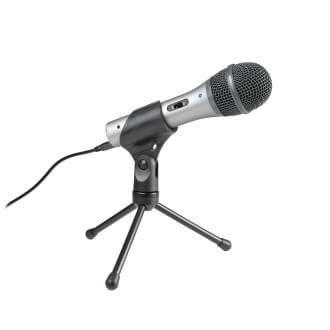
The ATR2100-USB is designed to take you from the stage to the studio and beyond.
This rugged handheld microphone offers two outputs, USB output for digital recording, and an XLR output that connects with a sound system’s conventional microphone input for use in live performance.
The microphone plugs right into your computer’s USB port, and functions seamlessly with your favorite recording software.
The ATR2100-USB also offers a quality analog-to-digital converter for excellent fidelity, and a headphone output with level control for monitoring. Its cardioid polar pattern reduces pickup of unwanted sounds from the sides and rear.
The microphone is ideal for live performance, podcasting, home studio recording, field recording, and voiceover use.
Audio-Technica ATR 2100-USB Microphone Features
- Handheld dynamic microphone with USB digital output and XLR analog output
- USB output connects to your computer for digital recording, while the XLR output connects with your sound system’s conventional microphone input for use in live performance
- Smooth, extended frequency response ideally suited for podcasting, home studio recording, field recording, voiceover, and on-stage use
- Built-in headphone jack allows you to directly monitor from your microphone
- Adjust headphone volume with easy-to-use controls on the bottom of the microphone
- High-quality AD convertor with 16 Bit, 44.1/48 kHz sampling rate
- Compatible with Windows and Mac
- Low-mass diaphragm provides excellent frequency response
- Cardioid polar pattern reduces pickup of unwanted sounds from the sides and rear, improving isolation of desired sound source
- Tripod desk stand with folding legs for secure and easily portable tabletop use
- Threaded stand clamp attaches securely to the supplied tripod or to a conventional microphone stand
- USB and XLR cables included
- Durable metal construction for long-lasting performance
- On/off switch functions for both USB and analog operation
Blue Yeti : Best ASMR microphone under 200 USD
Yeti is a multi-pattern USB microphone . It can be used as a plug and play USB microphone. It connects directly to the USB port on your laptop or desktop computer and without having to download any other software will work with your favourite recording program.
Blue Yeti is one of the most popular microphones among ASMR artists and has a great vocal recording performance.
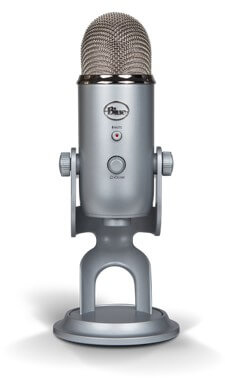
Blue Yeti Features
Whether you’re recording to GarageBand or audacity, podcasting, dictation or even Skype. Yeti features three condenser capsules. A condenser capsule delivers that rich detailed audio you typically find in studio recording.
Yeti features some studio controls directly on the mic on the back above your or pattern selection You have analog gain control which allows you to adjust the sensitivity of the microphone. You can also plug headphones directly into Yeti for zero latency direct monitoring, which is great for multi-tracking or just being able to hear exactly what you’re recording without any echo or delay.
Yeti features headphone volume control on the front as well as a mute button in case you have to pause in the middle of a podcast. Yeti comes with a desktop stand, but also has a standard thread for attaching to a traditional mic stand or the Radius, which is yetis custom shock mount sold separately.
Blue Yeti is a really well built and heavy microphone with really good asthetics.
Recording Polar Patterns
As a multi-pattern microphone Yeti offers four Polar pattern options or directions in which the mic will pick up sound.
- Yeti will record in cardioid, which is directionally to the front, great for instruments or single person podcast.
- Yeti will also record an omnidirectional which is 360 Degrees around the mic. This is great for band practice of Chorus or multi-person podcast.
- Yeti will also record in Stereo which is right and left. This is great for instrument recording to get your right and left separation or for voice and vocals. It gives you an open natural room sound.
- Yeti will record in figure of eight or bi-directional which just means front and back. This is great for Duets or interviews.
Blue Yeti Technical Specifications
- Power Required/Consumption: 5V 150mA
- Sample Rate: 48 kHz
- Bit Rate: 16-bit
- Capsules: 3 Blue-proprietary 14mm condenser capsules
- Polar Patterns: Cardioid, Bidirectional, Omnidirectional, Stereo
- Frequency Response: 20Hz – 20kHz
- Max SPL: 120dB (THD: 0.5% 1kHz)
- Dimensions (extended in stand): 4.72″ (12cm) x 4.92″(12.5cm) x 11.61″(29.5cm)
- Weight (microphone): 1.2 lbs (.55 kg)
- Weight (stand): 2.2 lbs (1 kg)
Rode Podcaster USB Microphone : Best ASMR microphone under 300 USD
The Rode Podcaster is a dynamic, USB microphone that combines broadcast-quality audio with the simplicity of USB connectivity. It can record direct to a computer without the need for an additional digital interface.
Rode Podcaster Features
It includes 18-bit resolution, 48kHz sampling A/D converter, the Podcaster processes all of the analogue-to-digital conversion internally, thus bypassing the computer’s lower quality on-board sound controller and giving a much better sound quality.
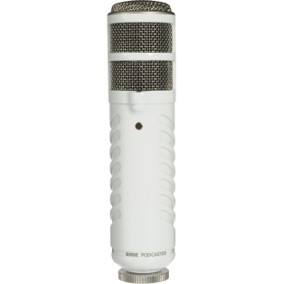
A headphone output on the microphone body provides zero-latency monitoring, so the user can hear exactly what is being recorded, free of delay or echo.
The Podcaster features an internal pop filter, designed to minimise plosives sounds , this means that you do not need an additional POP filter.
It is fully compatible with Windows and MAC. The Podcaster is ideal for podcasting, videos, YouTube, voiceover, any production application that requires a simple yet professional microphone.
It can also be used as an iPad microphone for the Apple iPad (in conjunction with the iPad Camera Connection Kit and a powered USB hub) to provide high quality recording to various iPad audio applications such as Garageband.
The Podcaster includes a sturdy RM2 microphone ring mount.
Rode Podcaster Technical Specs
- Acoustic Principle: Dynamic
- Active Electronics: Analogue signal conditioning + A/D and USB interface
- Polar Pattern: Cardioid
- Resolution: 24-bit
- Sampling Rate: 44-96kHz
- Address Type: End
- Frequency Range: 40Hz – 14kHz
- Maximum SPL: 115dBSPL
- Sensitivity: -51.0dB re 1 Volt/Pascal (2.80mV @ 94 dB SPL) +/- 2 dB @ 1kHz
- Power Options: USB bus powered
- Weight: 655.00g
- Dimensions: 215.00mmH x 56.00mmW x 52.00mmD
- Output: USB
Rode Broadcaster : Best Condenser ASMR microphone under 400 USD
Specifically designed for On-Air applications, the Rode Broadcaster Studio Condenser Microphone is perfect when wide frequency response and low distortion are demanded.
Winner of the Radio World/US National Association of Broadcasters (NAB) What’s Cool award in 1998, the Broadcaster has become an industry standard when studio sound quality is required for on air applications.
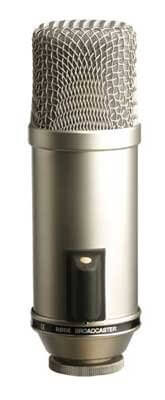
Utilizing an Australian designed and manufactured Rode 1 inch externally biased condenser transducer, the Broadcaster features a switchable high pass filter to remove low frequency rumble, voice tailored low-cut feature, ultra low noise and a rugged stainless steel body.
A unique On-Air LED indicator can be switched on or off by shorting contacts on the 5 pin audio connector. This feature allows console operators to warn the Talent that the mic is live. Plus, the Broadcaster includes a full 10 year warranty, stand mount and zip pouch.
Shure SM7B Cardioid Dynamic Microphone : Best Dynamic ASMR microphone under 400 USD
The SM7B dynamic microphone has a smooth, flat, wide-range frequency response appropriate for music and speech in all professional audio applications.
It features excellent shielding against electromagnetic hum generated by computer monitors, neon lights, and other electrical devices.
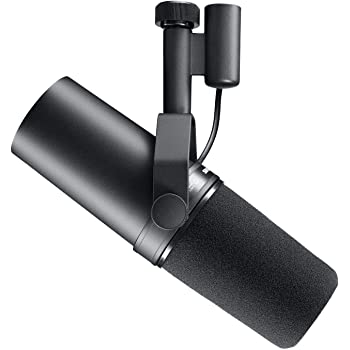
The SM7B has been updated from earlier models with an improved bracket design that offers greater stability. In addition to its standard windscreen, it also includes the A7WS windscreen for close-talk applications.
Shure SM7B features
- Flat, wide-range frequency response for exceptionally clean and natural reproduction of both music and speech
- Bass roll-off and mid-range emphasis (presence boost) controls with graphic display of response setting
- Improved rejection of electromagnetic hum, optimized for shielding against broadband interference emitted by computer monitors
- Internal ‘air suspension’ shock isolation virtually eliminates mechanical noise transmission
- Highly effective pop filter eliminates need for any add-on protection against explosive breath sounds, even for close-up vocals or narration
- Now shipping with the A7WS detachable windscreen, designed to reduce plosive sounds and gives a warmer tone for close-talk vocals
- Yoke mounting with captive stand nut for easy mounting and dismounting provides precise control of microphone position
- Classic cardioid polar pattern, uniform with frequency and symmetrical about axis, to provide maximum rejection and minimum coloration of off-axis sound
Heil PR40 : Best ASMR microphone under 500 USD
This is one of the best microphones money can buy.
The PR 40 Dynamic Cardioid Studio Microphone from Heil Sound is a high-performance dynamic microphone ideal for use as a vocal mic for talk-show hosts and other voice-over applications.
The large dynamic element produces a smooth response with an articulate and natural midrange. The size of the diaphragm, combined with a low mass and an efficient NdFeB magnet structure, allow the microphone to achieve a wide dynamic range and capture high SPLs, making it a great kick drum mic as well.
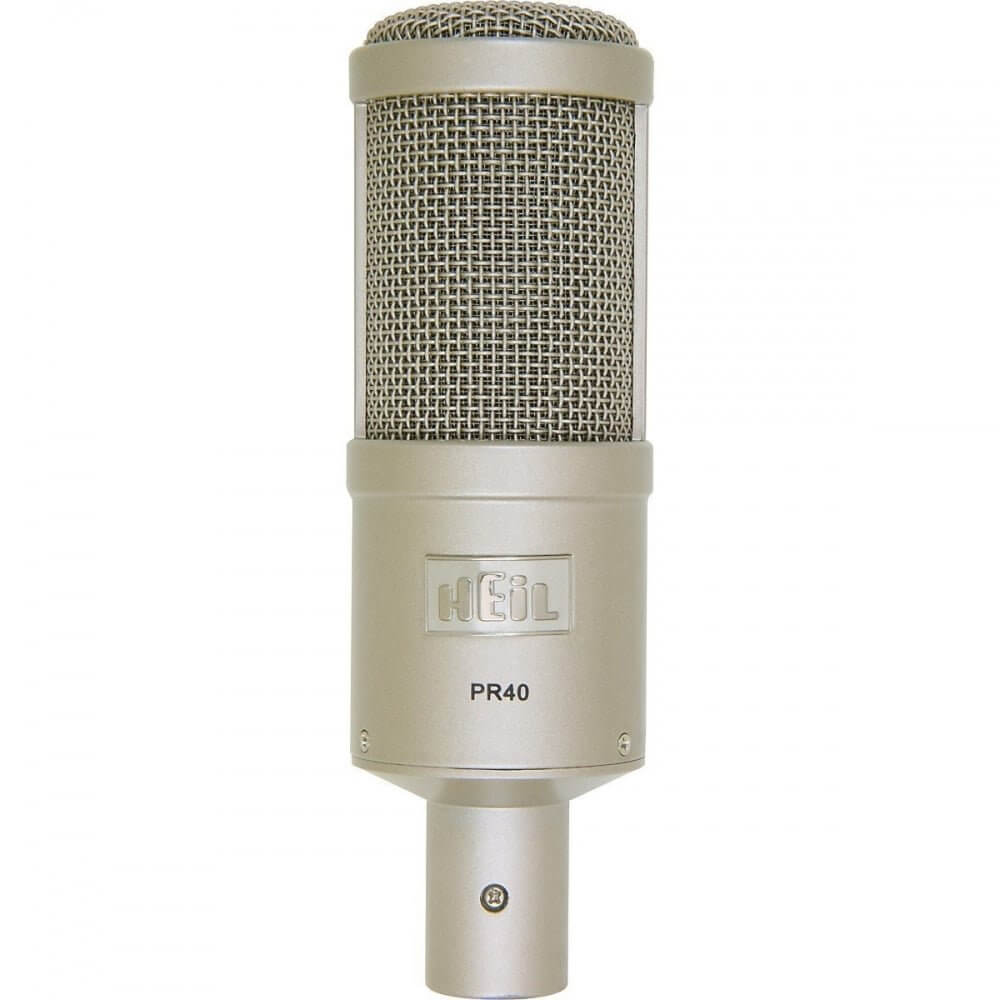
This front-address microphone has 4 rear ports to reject off-axis noise, resulting in a smooth, tight cardioid pickup pattern with reduced proximity effect.
The steel body and internal humbucking coil shield the microphone, making it safe for use near video monitors and noisy lighting fixtures. An internal Sorbothane shock-mount decouples the microphone’s dynamic element from the body to reduce the effects of handling noise.
3Dio ASMR microphone
3Dio microphones accurately capture the sound of a recording space. Providing a fully immersive soundscape, they transport the listener into the room as if they were in the studio during the recording. Record an orchestra or a choir and surround the listener with music from all angles for truly captivating experiences.
Whether you’re capturing the sounds of the ocean, a hummingbird in flight, singing cicadas, or the rumbling of a busy city street, nothing sounds quite like a 3Dio binaural microphone. Immerse your listeners into the natural world with the portable, light-weight and highly affordable 3Dio FS series microphones.
